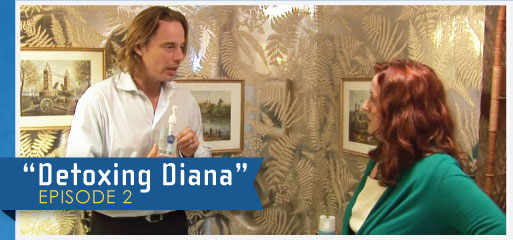Shocking Facts about Toothpaste
Posted: March 14th, 2012
Category: Shocking Facts
Toothpaste can be found in the bathroom of almost every family in America. How many of us know exactly what these ingredients are and how they affect our body?
- In 1991, the Akron (Ohio) Regional Poison Control Center reported that “Death has been reported following ingestion of 16mg/kg of fluoride.” Only 1/10 of an ounce of fluoride can kill a 100 pound adult. According to the Center, “fluoride toothpaste contains up to 1mg/gram of fluoride.” Even Proctor and Gamble, the makers of Crest, acknowledge that a family-sized tube “theoretically contains enough fluoride to kill a small child.”
- Many name-brand toothpastes and mouthwashes contain potentially harmful ingredients, which are made up of very small molecules that may penetrate through the tissue of your mouth, enter the blood stream, and build up in the liver, kidneys, heart, lungs, and tissues.
- One pesticide, triclosan, found in Colgate toothpaste, breaks down into chloroform with tap water and dioxin in the environment, impairs thyroid function and lives in human breast milk, urine and blood, according to studies.
- Read the label on any major brand toothpaste or mouthwash. You’ll see they are loaded with dangerous toxins and chemicals such as sodium fluoride, triclosan, FD&C Blue Dye #1 and 2, sodium lauryl sulfate, and hydrated silica. All of these common ingredients have been found to be harmful to humans.
- Fluoride has NEVER been approved by the Food and Drug Administration (FDA). Additionally, a 1990 study stated that fluoride has been shown to NOT reduce cavities and scientists are now linking fluoride to dental deformity, arthritis, allergic reactions and about 10,000 unnecessary deaths each year from cancer.
- Perhaps the most dangerous ingredient in personal-care products is Sodium Lauryl Sulfate (SLS). Because Sodium Lauryl Sulfate has a foaming properties, it is added to toothpastes in order to generate foam and give the impression that the toothpaste is working. However, Sodium Lauryl Sulfate has been found to be quite corrosive and harmful to skin tissue says a report by the American College of Toxicity. In the cleaning industry, SLS is used in products such as garage floor cleaners, engine degreasers and car wash soaps. Elsewhere, SLS is used for clinical testing as a primary skin irritant. Laboratories use it to irritate skin on test animals and humans so that they may then test healing agents to see how effective they are on the irritated skin.
- The most recent studies do not even show that water fluoridation is effective in reducing tooth decay. In the largest U.S. study of fluoridation and tooth decay, United States Public Health Service dental records of over 39,000 school children, ages 5-17, from 84 areas around the United States showed that the number of decayed, missing, and filled teeth per child was virtually the same in fluoridated and non-fluoridated areas.
- Triclosan is used as antimicrobial agent can can cause irritation and has been linked to allergies. It is a clorophenol, belonging to a group of chemicals that can lead to cold sweats, circulatory collapse, convulsions, coma, and death.
- A common ingredient in household toothpaste is Propylene Glycol (also called Propanediol): Also used as a brake fluid, this colourless liquid is the main ingredient in antifreeze, brake fluid, deicers, and laundry detergent, but is also used in most toothpastes and mouthwashes. It is linked to contact dermatitis, kidney damage and liver abnormalities. It can inhibit skin cell growth in human tests, can cause gastro-intestinal disturbances, nausea, headache and vomiting, central nervous system depression and can damage cell membranes causing rashes, dry skin and surface damage (according to the FDA Material Safety Data Sheet).
- Recent studies indicate that FD & C Blue Dyes 1 & 2 can trigger a wide number of behavioral, learning, and health problems. FD&C colour dyes may also cause potentially severe allergic reactions, asthma attacks, headaches, nausea, fatigue, nervousness, lack of concentration, and cancer.
- Fluoride has been classified as a skin irritant. As a chemical, it has been associated with acne-like bumps that form around the mouth. Dubbed perioral dermatitis, this skin disorder is often mistaken for acne. It is treated with the same oral antibiotics often prescribed for severe acne outbreaks, but the most successful treatment is the elimination of products like fluoridated toothpaste. When these toothpastes come in contact with the skin around the mouth, they cause mild to severe irritation. Many users notice that switching to a fluoride-free toothpaste (or a toothpaste alternative like herbal tooth powder) makes a remarkable difference in their skin.
Natural Toothpaste Alternatives
Food grade hydrogen peroxide (3 % solution) – will help to whiten your teeth. It will also help to keep your mouth fresh, clean, and healthy.
Add a few drops to your toothbrush before brushing your teeth. Use only a 3% solution or weaker.
Add a few drops to your toothbrush before brushing your teeth. Use only a 3% solution or weaker.
Baking soda – helps to whiten your teeth and freshen your mouth. Your teeth will feel really clean after you use it the fist couple of times.
References
http://www.huffingtonpost.com/martha-rosenberg/toxins-personal-health_b_921373.html
http://www.mbschachter.com/dangers_of_fluoride_and_fluorida.htm
http://hanasgreenliving.blogspot.com/2011/07/toothpastes-hidden-dangers.html
http://www.skinmagazine.co.uk/the-5-hidden-dangers-lurking-in-your-toothpaste
http://www.naturalnews.com/031554_fluoride_acne.html
http://www.mbschachter.com/dangers_of_fluoride_and_fluorida.htm
http://hanasgreenliving.blogspot.com/2011/07/toothpastes-hidden-dangers.html
http://www.skinmagazine.co.uk/the-5-hidden-dangers-lurking-in-your-toothpaste
http://www.naturalnews.com/031554_fluoride_acne.html


